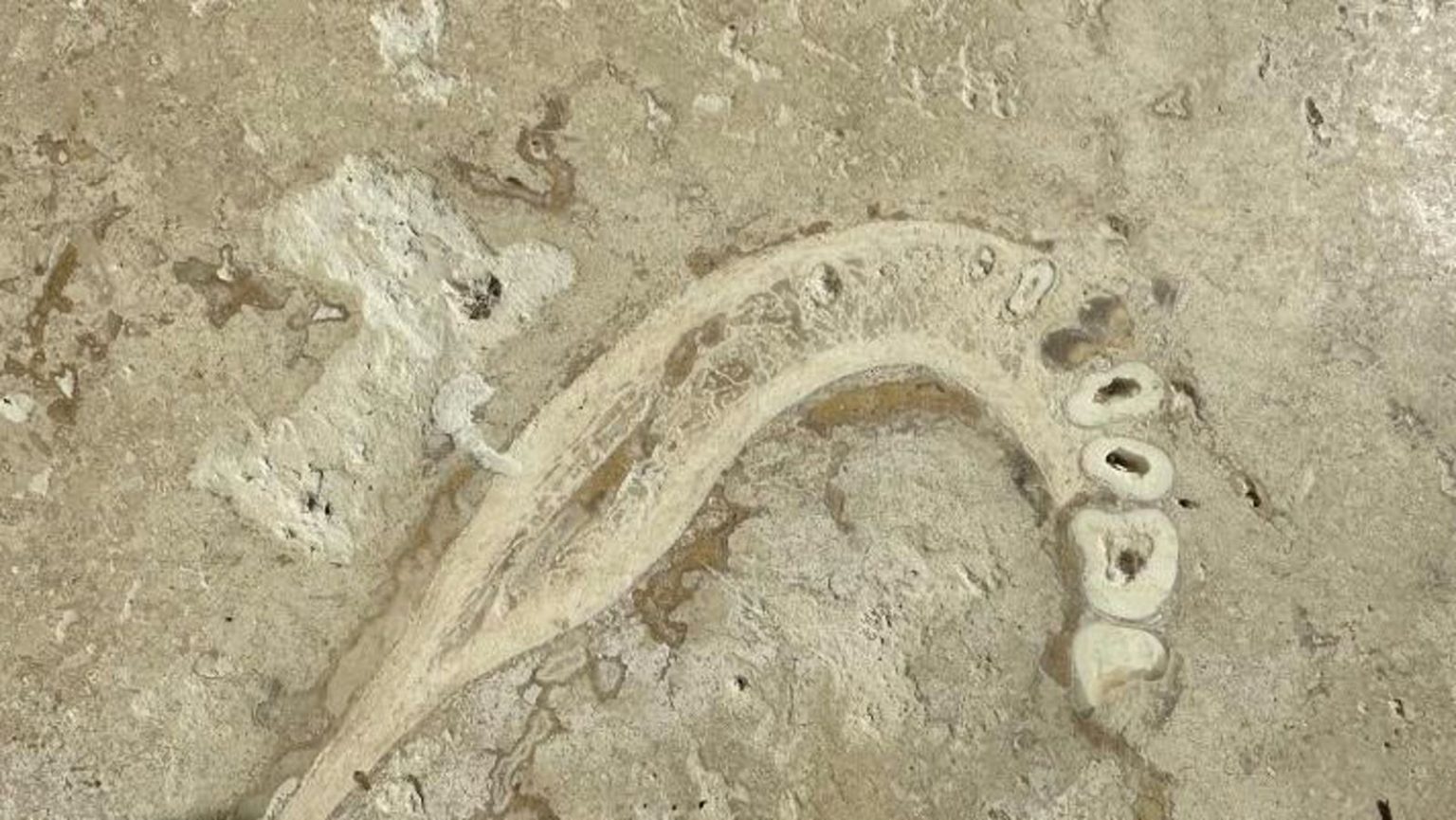A European dentist was shocked to discover a mandible embedded in the newly installed tile floor at his parents’ home. After posting a photo of the fossil on Reddit, paleontologists from around the world have reached out to him. An international team of scientists now plans to study the fossil, believing it may belong to an extinct member of the human lineage.
The fossil was found in travertine tile sourced from Turkey, a material known for containing fossils of plants, algae, and animals. While human fossils are rare, they have been found in travertine tile before. The dentist, who specializes in dental implants, recognized the fossil as human due to the teeth distribution and mandible width. The discovery has sparked interest and curiosity among experts and the public alike.
One of the scientists that will study the mandible is Mehmet Cihat Alcicek of Pamukkale University, who was part of the team that studied the homo erectus fossil found in the same region. The team plans to carefully remove the tile without damaging the fossil using the help of a stonemason. The mandible will be analyzed using technology such as CT scans, DNA extraction, and 3D printing to share among scientists.
Finding vertebrate fossils in processed travertine tile is extremely rare, with hominin fossils being even more uncommon. Only a handful of hominin fossils have been found in travertine tile. Scientists are hopeful that the mandible could provide valuable insights into human evolution and may be eventually placed in a museum for public display. The dentist’s discovery has captured the public’s imagination and spurred interest in examining tile floors for similar fossils.
This rare discovery adds to the growing body of evidence of human fossils found in unexpected places. The dentist’s keen eye and background in dental implants allowed him to recognize the mandible as human, leading to further investigation by experts in the field. The scientific community is excited about the potential research opportunities that this find presents and is eager to learn more about the fossil’s origins and significance in the study of human evolution.
As the team of scientists prepares to study the mandible further, they are faced with the challenge of safely extracting the fossil from the tile without causing damage. Techniques such as CT scans and 3D printing will be used to analyze the fossil without risking its integrity. The discovery of the mandible in the tile has brought attention to the importance of exploring unexpected places for fossils and has reignited public interest in paleontology and human evolution.
Overall, the discovery of the mandible in the travertine tile represents a significant and rare find that has the potential to shed light on human evolution. The dentist’s unexpected discovery has garnered global interest and excitement among paleontologists and the public. As the scientific community prepares to study the mandible further, there is hope that this remarkable find will provide valuable insights into our shared evolutionary history.













